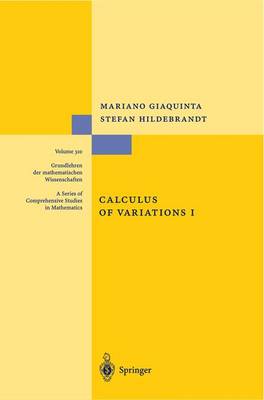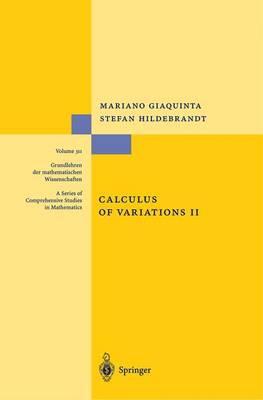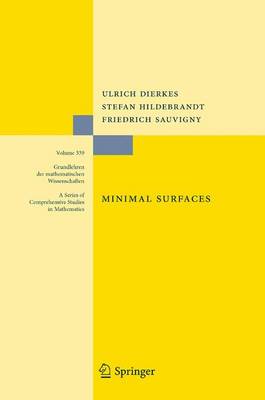Grundlehren der mathematischen Wissenschaften
4 primary works
Book 310
This two-volume treatise is a standard reference in the field. It pays special attention to the historical aspects and the origins partly in applied problems—such as those of geometric optics—of parts of the theory. It contains an introduction to each chapter, section, and subsection and an overview of the relevant literature in the footnotes and bibliography. It also includes an index of the examples used throughout the book.
Book 311
This book by two of the foremost researchers and writers in the field is the first part of a treatise that covers the subject in breadth and depth, paying special attention to the historical origins of the theory. Both individually and collectively these volumes have already become standard references.
Book 339
Minimal Surfaces
by Ulrich Dierkes, Stefan Hildebrandt, and Friedrich Sauvigny
The treatise is a substantially revised and extended version of the monograph Minimal Surfaces I, II (Grundlehren Nr. 295 & 296).
The first volume begins with an exposition of basic ideas of the theory of surfaces in three-dimensional Euclidean space, followed by an introduction of minimal surfaces as stationary points of area, or equivalently, as surfaces of zero mean curvature. The final definition of a minimal surface is that of a nonconstant harmonic mapping X: \Omega\to\R^3 which is conformally parametrized on \Omega\subset\R^2 and may have branch points. Thereafter the classical theory of minimal surfaces is surveyed, comprising many examples, a treatment of Björling´s initial value problem, reflection principles, a formula of the second variation of area, the theorems of Bernstein, Heinz, Osserman, and Fujimoto.
The second part of this volume begins with a survey of Plateau´s problem and of some of its modifications. One of the main features is a new, completely elementary proof of the fact that area A and Dirichlet integral D have the same infimum in the class C(G) of admissible surfaces spanning a prescribed contour G. This leads to a new, simplified solution of the simultaneous problem of minimizing A and D in C(G), as well as to new proofs of the mapping theorems of Riemann and Korn-Lichtenstein, and to a new solution of the simultaneous Douglas problem for A and D where G consists of several closed components.
Then basic facts of stable minimal surfaces are derived; this is done in the context of stable H-surfaces (i.e. of stable surfaces of prescribed mean curvature H), especially of cmc-surfaces (H = const), and leads to curvature estimates for stable, immersed cmc-surfaces and to Nitsche´s uniqueness theorem and Tomi´s finiteness result.
In addition, a theory of unstable solutions of Plateau´s problems is developed which is based on Courant´s mountain pass lemma. Furthermore, Dirichlet´s problem for nonparametric H-surfaces is solved, using the solution of Plateau´s problem for H-surfaces and the pertinent estimates.
Book 341
Global Analysis of Minimal Surfaces
by Ulrich Dierkes, Stefan Hildebrandt, and Anthony Tromba
The third chapter deals with a priori estimates for minimal surfaces in higher dimensions and for minimizers of singular integrals related to the area functional. In particular, far reaching Bernstein theorems are derived.
The second part of the book contains what one might justly call a "global theory of minimal surfaces" as envisioned by Smale. First, the Douglas problem is treated anew by using Teichmüller theory. Secondly, various index theorems for minimal theorems are derived, and their consequences for the space of solutions to Plateau´s problem are discussed. Finally, a topological approach to minimal surfaces via Fredholm vector fields in the spirit of Smale is presented.



